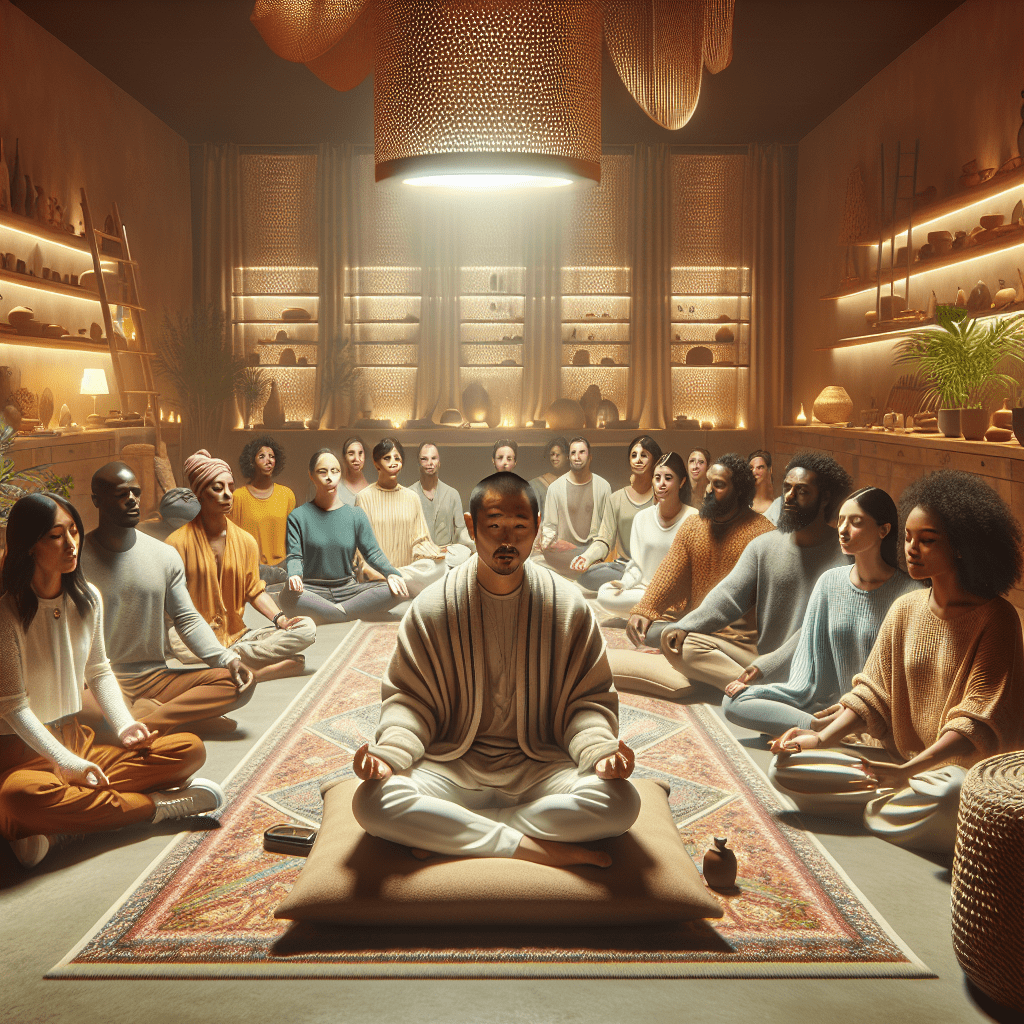
Prioritize your mental well-being daily. Enhance your life by nurturing your mental health with the Smart Meditation app. Break free from stress, alleviate anxiety, and enhance your sleep quality starting today.
How Did The Buddha Meditate?
The Enlightenment Under the Bodhi Tree: Unlocking the Secrets of Buddha’s Meditation
When delving into the profound realms of meditation, the narrative of Siddhartha Gautama, or as he’s better known, the Buddha, stands as a captivating beacon of spiritual awakening. His journey from a prince ensconced in luxury to becoming the founder of Buddhism is not just a tale of renunciation but also an insightful guide on the path to mental and spiritual liberation. So, how exactly did the Buddha meditate? Let’s unravel this mystery and see if we can’t glean some ancient wisdom to bolster our modern practices.
The Buddha’s Quest for Enlightenment:
First off, it’s worth mentioning that back in his day, the Buddha didn’t have the luxury of popping down to the local spa for a meditation session. Nope, he had to put in the hard yards, searching far and wide for the key to unshackle the mind from suffering. His journey took him through various teachings and practices, including but not limited to rigorous asceticism, which he later deemed extreme and ineffective.
1. Middle Way Meditation:
The Buddha eventually settled on what he termed the Middle Way—a balanced approach that eschewed the extremes of self-indulgence and self-mortification. It was under the Bodhi tree that he ultimately found his groove, in what is now celebrated as the moment of supreme awakening or enlightenment.
2. Vipassana and Samatha:
Detail-wise, the Buddha’s meditation incorporated elements of what are now known as Vipassana (insight meditation) and Samatha (calm abiding). He delved deep into the nature of his own mind, observing thoughts and sensations without attachment, fostering a profound level of mindfulness and concentration.
-
Vipassana involves keenly observing the intricacies of the mind and body, gaining insight into the true nature of existence. It’s like being a mind detective, sifting through the clues of sensations and thoughts to uncover the reality of impermanence, suffering, and the concept of non-self.
-
Samatha, on the other hand, is about calming the chatter of the mind, steadying the ship amidst the stormy seas of distraction. It’s like finding that inner zen garden where thoughts gently flutter away like autumn leaves in a gentle breeze.
Through the harmonious blend of these practices, the Buddha achieved an unparalleled state of insight and tranquility. He penetrated the veils of ignorance, coming to understand the Four Noble Truths and the Eightfold Path, which form the bedrock of Buddhist teachings.
A Path Worth Treading
So, what’s the takeaway for us mere mortals trying to keep our heads above water in the digital deluge of modern life? Well, for starters, the Buddha’s approach to meditation exemplifies the importance of balance and the power of introspection. There’s no need to go wandering off into the wilderness (unless you’re into that sort of thing), but we can certainly apply the principles of Vipassana and Samatha to our daily routines.
Remember:
- Find your Middle Way: Too much Netflix and chill? Or perhaps chaining yourself to the grindstone? Aim for a balance that keeps your spiritual and worldly duties in harmony.
- Observe without attachment: This doesn’t mean being indifferent, but rather not getting caught up in the soap opera of thoughts that play in your mind.
- Foster mindfulness and concentration: Whether you’re brushing your teeth, crafting an email, or sitting in meditation, be fully present. It’s about quality, not quantity.
In essence, the Buddha’s meditation technique is not shrouded in esoteric mysticism but is a practical guide to cultivating a clear, compassionate, and calm mind. The path is laid out; all that’s required is the will to tread it. So, why not give it a shot? Who knows, it might just be the key to unlocking your own inner awakening.





